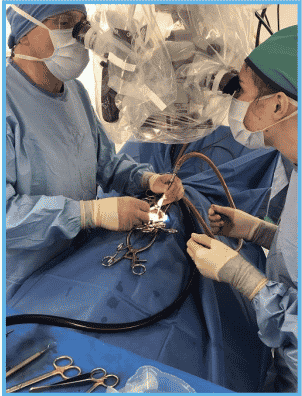Laryngeal Paralysis
What is a larynx?
The larynx is the junction between the pharynx and the trachea (wind-pipe). It is a complex tube made of many cartilages and folds. To function properly, it must open fully during breathing, close completely during swallowing, and vibrate when talking (or barking!)
What is laryngeal paralysis, and what are the symptoms?
The function of the larynx is controlled by nerves. If these nerves become damaged, all, or part of the larynx will stop working effectively. Laryngeal paralysis is often caused by degeneration (old age) of these nerves, resulting in the inability of part of the larynx from fully opening during breathing.
This results in loud harsh breathing noises, and is often associated with a cough, inability to exercise well and a change of bark. In severe cases, some dogs cannot effectively swallow, have significant breathing problems and some dogs can even collapse. The most common affected dogs include older Labradors, Golden Retrievers and other large breed dogs, but all breeds can be affected.
Other less common causes include trauma to the neck, hormonal imbalances and even tumours within the neck or chest.
Investigation and treatment
A member or the surgical team with discuss your pet’s history and symptoms to decide the best individual course of action. This will include a full examination of your pet’s mouth and upper airways, but will often include blood tests, X-rays, a CT-scan and sometimes a camera into the lungs. Once a full assessment has been made the most appropriate surgical procedure can be performed.
In most cases this is a surgical procedure called a “tie-back”, where the larynx is approached through the side of the neck, and the paralysed cartilage is permanently “tied-back” into place to keep the larynx open.
Why have I been referred?
Laryngeal paralysis is often a multifactorial disease, so our expert team can perform the correct diagnostics with our state of the art diagnostic suit. This ensures that the correct procedures are performed where your pet’s safety is paramount. Our experienced surgeons can discuss any factors relating to your pet’s disease before performing surgery. Thorough knowledge of the local anatomy is vital to prevent damage to the large blood vessels in the neck. Our hospital is staffed 24h per day with vets and nurses, who can assist your pet’s recovery from surgery and anaesthesia. In addition, if your pet has a poor recovery from anaesthesia, we are staffed to offer one-on-one level of care in our dedicated ICU.
Prognosis
Most dogs recover well from surgery and have significantly improved breathing ability. Most dogs spend one night in the hospital following this surgery for intensive monitoring. Because most laryngeal paralysis cases are degenerative (old age problems), dogs will often have further agerelated nerve changes, although this can be many years into the future. Because the larynx has been permanently opened, your pet will have to undergo small lifestyle changes, and these can be discussed during your consultation with your pet’s surgeon.

